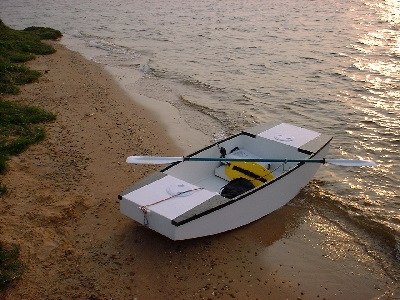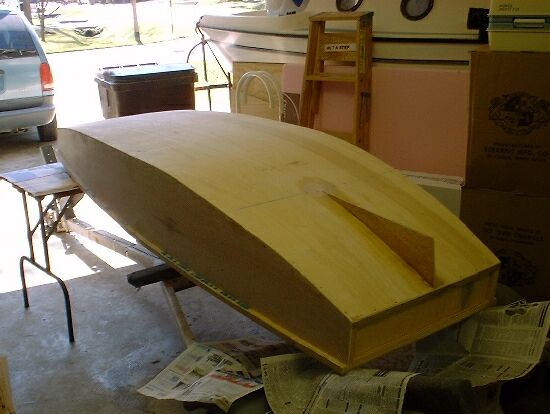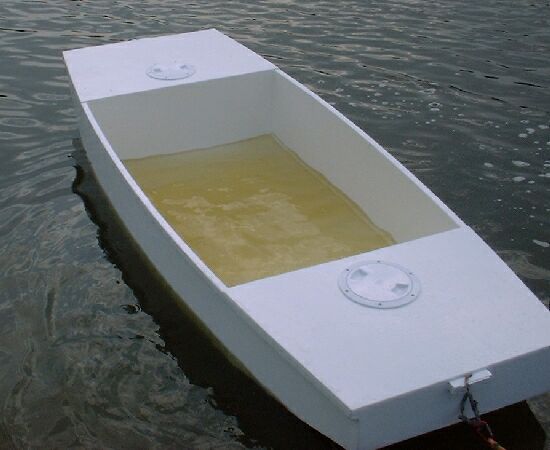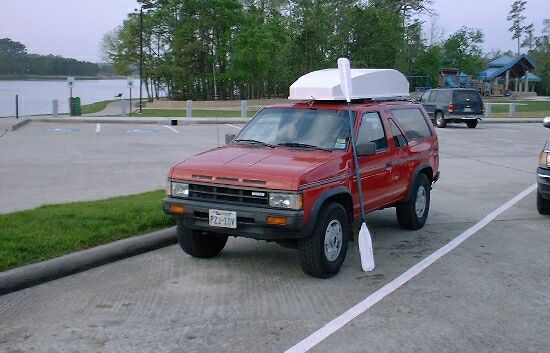Flats Rat Kayak
Article By Shorty This is about the simplest and smallest kayak or canoe type boat that can carry an adult, the original mouse was designed by Gavin Atkin and he has a group called "mouse boats".
The group has some simple guidelines as to what is considered a "mouse boat" and encourages members to make their own versions that fit that definition.
Gavin has free plans for several variations including a sailing version, a flat sided one for ultra simple construction, and a very stable one for fishing.
This is a kayak I designed to fit the mouseboat definition, she has flat panels for simple nail and glue construction, and a different type rocker shape that can carry heavier adults like me.
This is about the simplest and smallest kayak or canoe type boat that can carry an adult, the original mouse was designed by Gavin Atkin and he has a group called "mouse boats".
The group has some simple guidelines as to what is considered a "mouse boat" and encourages members to make their own versions that fit that definition.
Gavin has free plans for several variations including a sailing version, a flat sided one for ultra simple construction, and a very stable one for fishing.
This is a kayak I designed to fit the mouseboat definition, she has flat panels for simple nail and glue construction, and a different type rocker shape that can carry heavier adults like me.

Free Kayak Plans
Not much to building this boat, just need a single dimensioned drawing of the parts, here is the free plans for this kayak
If you don't know how to build chine log style plywood boats, I'd suggest getting a few basic boat building books.
Specifications
Length: 8'
Beam: 34.5" (across top of gunwales)
Max Depth: 14"
Freeboard with 300 lbs load: 8"
Paddling Speed: 3.2 mph

Paddling Performance
At the "Lazy Stealth" speed where I am paddling with very little effort, I go about 2.5 mph.
At the "Going Somewhere" speed where I am paddling for a long distance at a sustained effort level, I averaged 3.2 mph.
The fastest I could get the kayak to go, down hill with a tail wind, huffing and puffing, was 4.0 mph.
Paddling into choppy water is a bit of a challenge, because of the blunt bow.
On a trip at Lake Conroe, I started off wanting to paddle directly up a 10 mph wind gusting 25.
The wind was blowing from the long end of the lake so that the chop had some distance to develop.
If I went straight into the wind (and chop), it would pound the bow splashing over and land inside.
Then I steered about 30 degrees off the wind and the pounding / splashing significantly dissapated.
I had a bottomless chlorox bottle (bailer) with me, and when the spray water built up to an inch or two inside the hull, I'd stop paddling and do a few flips to get rid of the water.
The average speed paddling into that wind over an hour was 2.5 mph.
Paddling at right angles to the wind (parallel with the chop) or down wind was much easier, almost no splashing and gained a little surfing effect down the front of the chop.
I averaged a speed of 3.6 mph on the way back.
Here is the skeg. I think it is just about the right size. It does a good job of helping the hull track straight, yet it is still easy to turn.
 Self Rescue
Self Rescue
While in some shallow water, I set the kayak on it's side to see how high it would float with just the air boxes. It only sank in the water a few inches, and then when I let this is how much water was left inside. Then I waded out into some deeper water and tried to board over the stern. If I grabbed the gunwales and then pulled myself up over the stern, the aft air box was very adequate and I could self rescue.
Then I tried to reboard by climbing over the side. That worked as well, but there was a significant amount of water in the cockpit afterwards, with only a few inches of freeboard.
